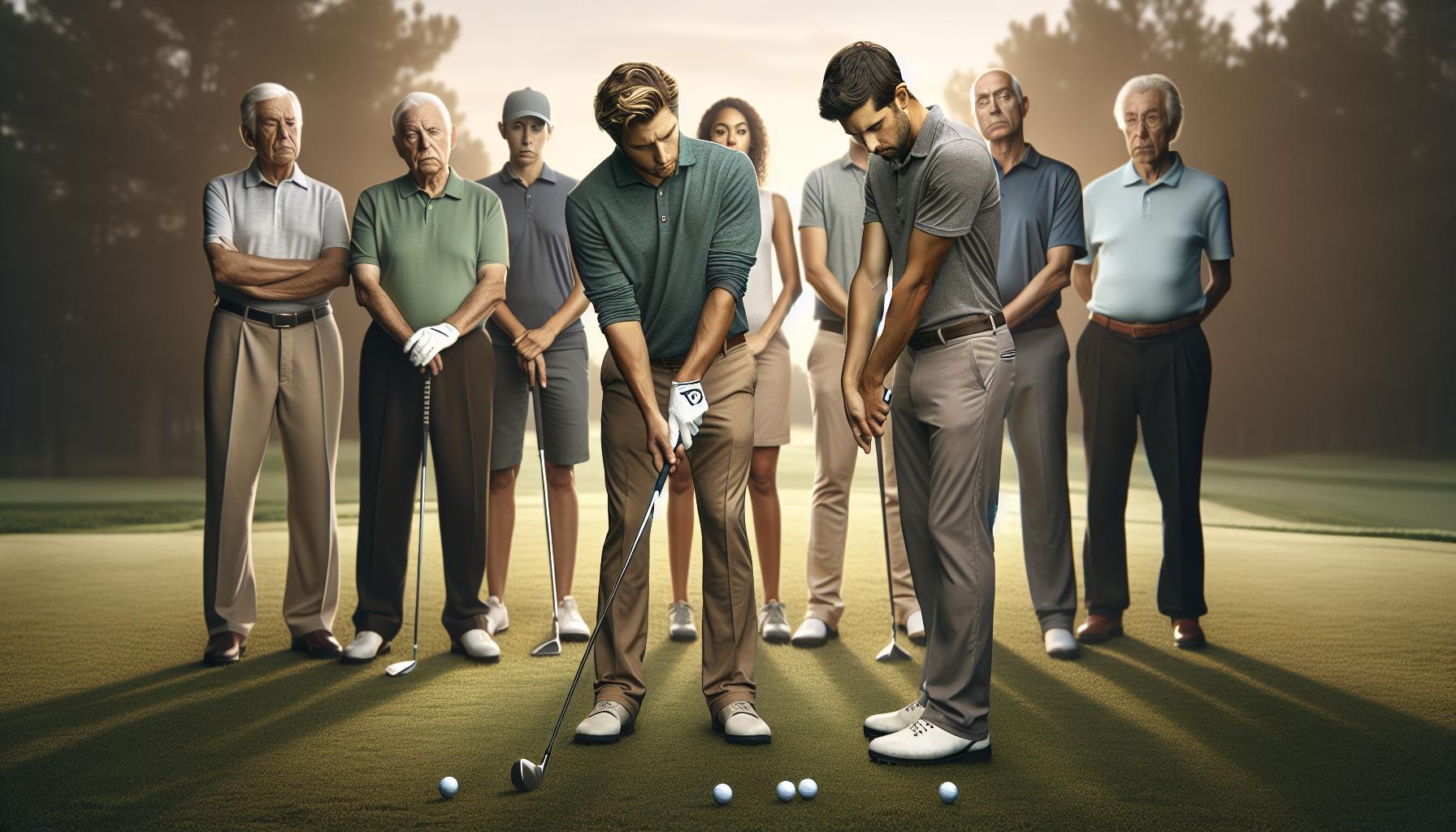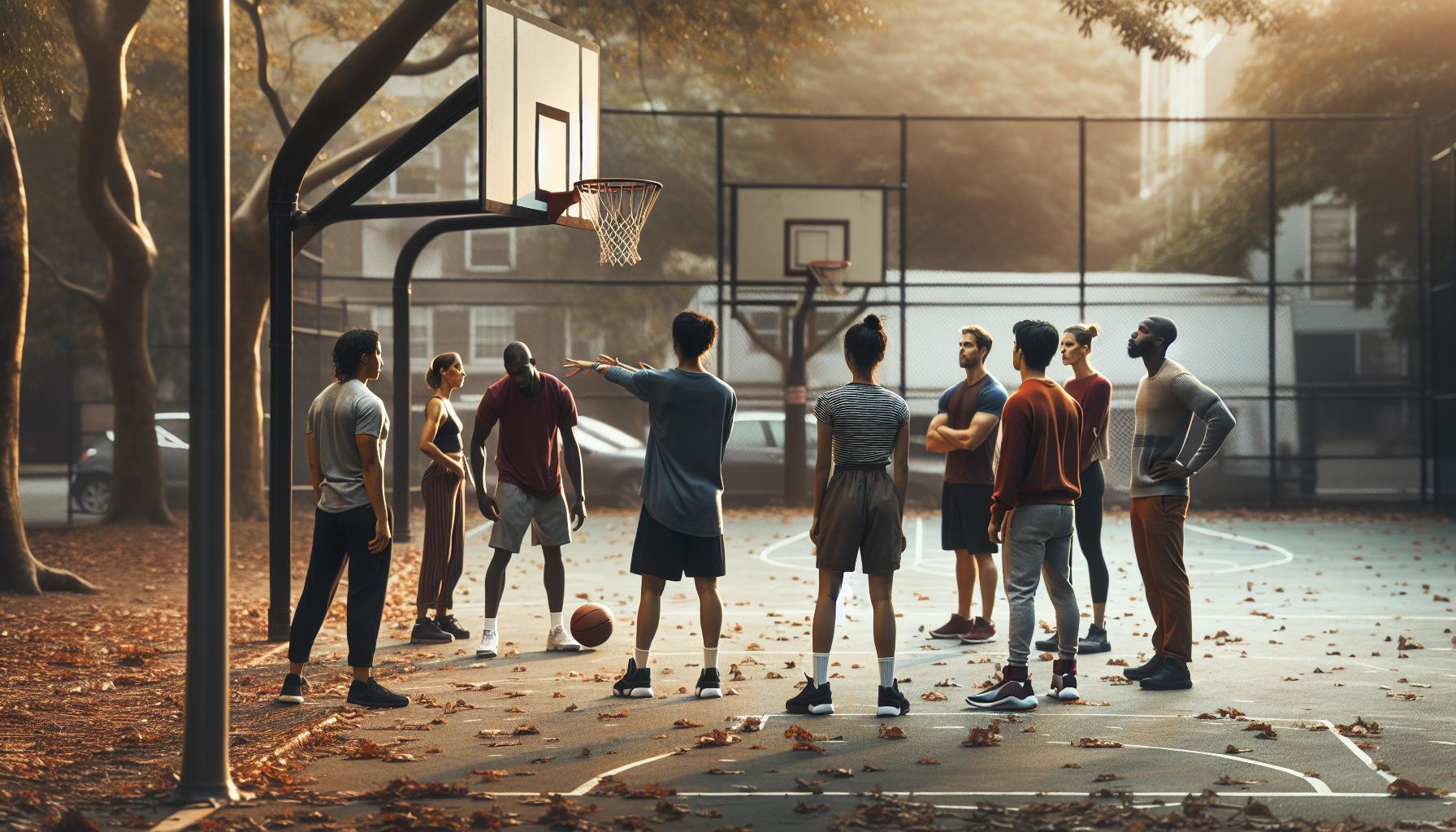Hooking the golf ball is a common challenge that frustrates many players, resulting in lost distance and accuracy. Studies show that the majority of golfers struggle with this issue at some point in their journey. Understanding the mechanics behind a hook and how to correct it is crucial for improving your game and achieving lower scores.
In this article, we will explore proven correction methods that can help you overcome the hook and regain control of your shots. By identifying the root causes-such as grip, stance, and swing path-you can adopt effective strategies tailored to your unique swing characteristics. Whether you’re a weekend warrior or a seasoned competitor, mastering your ball flight not only enhances your performance but also boosts your confidence on the course. Let’s dive into the techniques that will empower you to eliminate those unwanted hooks and hit straighter, more consistent shots.
Understanding the Causes of Hooking a Golf Ball
There are several factors that contribute to hooking a golf ball, which can often lead to frustration for players at any skill level. Understanding these causes is the first step towards tackling the problem effectively. A fundamental element in the equation is the relationship between the clubface orientation and the direction of the swing path at impact. When the clubface is pointing left of the target at impact (for a right-handed golfer), combined with an inside-to-out swing path, a hook is more likely to occur. This misalignment creates excessive side spin, causing the ball to curve sharply to the left.
Another major contributor to hooking is grip pressure. If a golfer’s grip is too strong or tight, it can close the clubface at impact, exacerbating the hooking effect. A common mistake is not paying attention to how the fingers and palms grip the club. An overly strong grip often leads golfers to rely on compensatory movements in their swing, which can further complicate mechanics and lead to inconsistent ball flight. It’s essential to ensure that the grip allows for a neutral clubface angle through impact, aligning properly with the swing path.
Lastly, posture and alignment play critical roles in the mechanics of a golf swing. If a golfer’s body is misaligned relative to the target line-either through their feet, hips, or shoulders-this can induce a swing path that promotes hooking. It can be beneficial to practice proper alignment drills, ensuring that your body is parallel to the target line before initiating your swing. Understanding these causes not only helps in avoiding hooks but also lays the groundwork for more consistent and reliable ball striking.
Common Mistakes Leading to Hooked Shots
Many golfers unknowingly fall into repetitive patterns that lead to hooks, often thinking they’re correcting one issue while inadvertently creating another. One prevailing mistake involves an overly strong grip, which can cause the clubface to close at impact. When players grip the club too tightly or position their hands too far around the grip, it becomes challenging to maintain a square clubface throughout the swing. This grip issue can compel a golfer to manipulate other aspects of their swing to compensate, leading to inconsistent results and an increased likelihood of hooking the ball.
Another common misstep is poor alignment. Golfers frequently underestimate the impact of their body alignment on swing mechanics. If a player’s shoulders, hips, and feet are not parallel to the target line, they may create a swing path that inadvertently approaches the ball from an inside-out angle, contributing to hooks. This misalignment makes it difficult to achieve that necessary face-to-path relationship, resulting in consistent misfires to the left (for right-handed golfers). Taking the time to practice alignment drills and focusing on proper body positioning relative to the target can help mitigate this issue.
Finally, many players overlook the importance of swing path consistency. Inefficient backswings that are too flat can create an over-the-top downswing, leading to an inside-out swing path that promotes hooking. Coupled with an improper grip or misalignment, these swing flaws reinforce one another, amplifying the tendency to hook the ball. Regularly assessing practice swings and utilizing swing path drills can empower golfers to develop motor patterns that promote a more neutral swing path, significantly improving their ball flight.
By recognizing and addressing these common mistakes, golfers can take strategic steps toward minimizing hooks and enhancing their overall performance on the course. Identifying specific flaws in grip, alignment, and swing dynamics allows players to implement focused corrections, ultimately leading to a more effective and enjoyable game.
Essential Grip Adjustments to Fix Your Hook
While a strong grip can provide control, it is often a primary culprit in causing hooks. By making specific adjustments to your grip, you can mitigate this issue and promote a more consistent ball flight. Many golfers find that a neutral grip-where the hands aren’t overly strong or weak-can be the key to keeping the clubface square at impact. A common modification is to ensure that only two or three knuckles are visible on the top hand of the grip at address, which typically encourages a more open clubface throughout the swing.
The placement of your thumbs is also crucial. For the right-handed golfer, a thumb placed down the right side of the grip (rather than wrapped around it) can help maintain clubface alignment. This positioning allows for better wrist hinge and an improvement in swing mechanics that may lead to straighter shots. In practice, grip the club and hold it at waist height. Your lead hand should rest comfortably only around the grip, with the thumb lying aligned with the shaft, ensuring it is not positioned excessively underneath.
You might also want to consider the pressure you apply to the grip. Gripping too tightly can inadvertently add tension throughout your arms and shoulders, resulting in less control as you swing. Aim for a light grip pressure-think of holding a tube of toothpaste without squeezing any out. This relaxed grip encourages a smoother swing and better timing, which can ultimately reduce hooks.
Step-by-Step Guide for Grip Adjustments
- Assess Your Current Grip: Check how many knuckles you see on your top hand and adjust to show 2-3.
- Adjust Thumb Position: Ensure your thumb aligns with the shaft, avoiding excessive wrapping.
- Lighten Your Grip: Focus on maintaining light pressure throughout your swing.
- Practice Regularly: Utilize practice swings to reinforce these grip adjustments before hitting the ball.
Incorporating these adjustments may require patience and practice, but the payoff will be worth it in terms of reducing hooks and enhancing your overall game. Try to make these changes gradually and observe how they impact your shots-note which adjustments lead to straightening out your ball flight, and don’t hesitate to make further refinements as needed.
How Stance and Posture Impact Your Shots
The way you position your body can have a significant impact on the trajectory and accuracy of your golf shots. Often overlooked, stance and posture set the foundation for your swing mechanics, and misalignments in these areas can easily contribute to hooking the ball. Aiming your body correctly relative to the target line can help maintain a neutral swing path, allowing the clubface to square up at impact.
When setting up, ensure your feet are shoulder-width apart for balance, and distribute your weight evenly between your feet. This stable base will help you maintain control throughout the swing. A forward tilt from the hips, rather than bending from the back, facilitates a more natural swing arc. Additionally, it’s important to keep your knees slightly flexed, which promotes better mobility and rotational freedom while swinging.
It’s also crucial to align your shoulders, hips, and feet parallel to your target line. This alignment encourages a more consistent swing path and minimizes the chance of an inside-out swing that can lead to hooks. You can use alignment sticks during practice to visually confirm your positioning. A common practice is to place one stick along your target line and another perpendicular, where your feet should be aimed, reinforcing these concepts during your pre-shot routine.
Your posture is equally important; maintaining an athletic stance-chest up and arms relaxed-allows for a more advantageous swing mechanics. If your posture is slouched or too rigid, it can create tension, leading to inconsistency in your shots. Regularly check your setup routine to ensure that your posture is conducive to achieving a straight shot trajectory. This focus on stance and posture is fundamental in correcting a hook and promoting a more controlled and accurate swing.
Swing Path Analysis: Correcting Your Hook
A player’s swing path plays a critical role in dictating the direction of a shot, especially when it comes to avoiding hooks. An inside-out swing path is often the culprits behind hooked golf shots, pulling the ball dramatically left for right-handed players. To correct this, golfers must develop an understanding of how their swing paths interact with the clubface angle at impact.
To evaluate your swing path, start by monitoring your practice sessions. Use alignment sticks or camera recordings to ascertain whether your club travels on a straight path relative to your target line. Ideally, your swing should be straight back and through, with minimal deviation. When practicing, focus on making conscious adjustments to create a more neutral swing path. A good tip is to visualize your backswing going straight back rather than rushing into an inside motion.
Another key corrective measure is to ensure proper body rotation during your swing. Many golfers, in attempting to generate power, will rely excessively on their arms, leading to an exaggerated in-to-out swing path. Instead, emphasize the rotation of your torso. A robust hip turn allows for a more stable swing foundation, encouraging the club to follow a more balanced, flat path through the impact zone. Implement drills that promote rotation over lateral movement, such as the “step drill,” which reinforces hip engagement without compromising swing stability.
Lastly, modifying your grip can also influence swing path. For those who tend to hook, adopting a weaker grip can help keep the clubface more open at impact, supporting a straighter swing path. Experiment with this adjustment during practice, ensuring that your grip isn’t too strong, which may encourage closure of the clubface and further exacerbate hooking tendencies. By focusing on these components-swing path analysis, body rotation, and grip adjustments-you can effectively work to correct hooks, fostering greater accuracy and consistency in your game.
Impact Dynamics: What Happens at Contact
The moment of contact between the clubface and the golf ball is the culmination of precision mechanics that can significantly influence the ball’s trajectory. Understanding the dynamics at this critical juncture can provide valuable insights for golfers looking to eliminate hooks from their game. When the clubface meets the ball, several factors come into play: the clubface angle, the path of the swing, and the impact quality, all of which are interrelated in determining the ball’s flight path.
A key aspect to mitigate hooking is the orientation of the clubface at impact. If the clubface is closed relative to the swing path, the ball will deviate to the left for right-handed golfers, leading to a hook. It’s essential to strive for a clubface that is square at impact, which can be achieved through conscious grip adjustments and swing path corrections discussed previously. Golfers should also focus on maintaining a consistent release of the club to prevent excessive closure of the face at contact. Utilizing training aids, like impact tape or specialized golf balls that change color upon contact, can offer immediate feedback on the angle and quality of impact.
Moreover, proper stance and setup cannot be emphasized enough. A poorly aligned body can lead to misdirected swings, exacerbating contact issues. Ensuring that your alignment is parallel to the target line enhances your ability to strike the ball with a square face. Performing pre-shot routines that include visualizing the target and aiming correctly can foster an improved focus on the path and angle of the clubface at the moment of impact.
Finally, the choice of equipment can also influence impact dynamics. Golf balls with a lower compression rating are more forgiving on off-center hits, providing a softer feel that may help with control, particularly when correcting gripping and alignment issues. Brands such as Titleist with their AVX model suggest lower spin and more neutral flight characteristics, which can combat the tendencies for hooks, allowing for greater accuracy and predictability in your shots.
By honing in on the intricate details of impact dynamics, golfers can establish a reliable foundation for their game, ultimately leading to a straighter shot and fewer hooks. Implementing these insights into practice routines can lead to measurable improvements over time.
Drills to Develop a Consistent Swing
To cultivate a consistent swing and combat the frustrating issue of hooking the golf ball, golfers can tap into a variety of targeted drills that emphasize proper mechanics and muscle memory. Committing to these drills not only sharpens your swing but also builds confidence that translates to the course.
One effective drill is the “Gate Drill.” Set up two alignment sticks or clubs on the ground about a foot apart, forming a “gate” just in front of the ball. The objective is to swing through this narrow gap without hitting the sticks, promoting a more accurate, inside-to-out swing path that’s crucial for avoiding hooks. Focus on keeping your clubhead moving straight through impact, ensuring your follow-through remains open.
Another valuable exercise is the “Toe-Up Drill.” Begin by addressing the ball with your club held vertically, the toe pointing straight up. As you swing back, maintain the toe’s vertical position until your lead arm is parallel to the ground. This encourages a more neutral clubface angle through impact, deterring it from closing too quickly. Repeat this motion slowly, ensuring that the clubhead stays on plane as you transition into your downswing.
Incorporating video analysis can also yield significant improvements. Record yourself from a few angles during practice sessions to identify swing flaws that may lead to hooking. Analyze whether your clubface is closing too soon or your path is too steep. By reviewing footage, you can make adjustments with a clearer understanding of your mechanics.
Lastly, engage in mental rehearsal alongside physical drills. Visualize successful shots where your ball flies straight and true, building a positive mindset that can counteract any negative tendencies. Combining these practices will lead to a more consistent swing, reducing the likelihood of unintended hooks and elevating overall performance on the course.
Using Equipment to Minimize Hooking
Utilizing the right equipment can significantly mitigate the frustration of hooking the golf ball. The choice of golf ball plays a crucial role in how your shots behave, as different models are designed with specific spin rates, compression levels, and cover materials that can accentuate or minimize hooks. To combat hooking, consider selecting golf balls that feature a low compression rating. These balls tend to have a softer feel and generate less spin, reducing the likelihood of an errant hook. For instance, balls like the Titleist TruFeel or Srixon Soft Feel are recommended for their forgiving nature and lower spin characteristics.
Additionally, the type of club you use can also influence your tendencies on the course. Irons with a wider sole design help aid in making cleaner contact with the ball, which is crucial for maintaining directional accuracy. Golfers should explore options like the Callaway Big Bertha B21 Irons, which are engineered to promote straight shots and provide enhanced forgiveness. These clubs come with an appealing offset that encourages a proper swing path, thus helping reduce hooks.
When it comes to driver selection, an adjustable hosel can give you the ability to tweak your club’s loft and lie. A slightly closed clubface can often be a source of hooking. By adjusting to a more neutral or open setting, you can find a configuration that assists in achieving straighter ball flight. Brands such as TaylorMade and Ping offer drivers with adjustable weights and settings, allowing golfers to fine-tune their equipment to match their swing characteristics effectively.
Finally, ensuring that your shaft is well-fitted is equally essential. Shafts with a softer flex can help slow down the clubhead speed at impact, which may prevent the clubface from closing too quickly-one of the main culprits of hooking. Consider fitting sessions at a local pro shop, where experts can analyze your swing and recommend the best shaft option based on your playing style. Following these equipment strategies allows golfers to create an environment where consistency thrives, making it easier to keep the ball on target.
Mental Strategies to Overcome Hooking
The mental game in golf is as crucial as the physical aspects, especially when it comes to overcoming the frustrating habit of hooking the ball. Many golfers unknowingly amplify their hooks due to anxiety or lack of focus. One effective strategy is to change your mindset before hitting the ball. Instead of concentrating solely on avoiding the hook, visualize a smooth and straight shot. This shift in perspective can help relax your body and promote a more fluid swing. In high-pressure situations or while playing a competitive round, utilize breathing techniques to calm your nerves. Taking a few deep breaths can center your focus and prepare you mentally for a successful shot.
Another helpful approach is to create a pre-shot routine that emphasizes relaxation and confidence. This routine can include visualizing your intended target, conducting a few practice swings, or even positive self-talk. For instance, saying to yourself, “I am hitting this shot straight” before addressing the ball can program your mind for success. Additionally, consider keeping a mental checklist to guide your thoughts before each swing. This might involve reminders about your grip, stance, and swing path-without overwhelming yourself with details.
Understanding your emotions and responses during the game can also lead to better performance. If you find yourself becoming frustrated after a hook, take a timeout to regroup mentally. Step away from the ball, breathe, and reset your focus. Recognize that everyone experiences inconsistencies on the course, and maintaining a positive attitude can significantly impact your overall performance. Ultimately, a mindful approach to your golf game can empower you to overcome hooking tendencies, leading to a more enjoyable and successful golfing experience.
Expert Tips from Professional Golfers
Many professional golfers face the challenge of hooking their shots at some point in their careers, and their approaches to correcting this issue can provide invaluable insights for players at all levels. One common advice shared among experts is the importance of aligning your grip and stance. For instance, Phil Mickelson emphasizes that a neutral grip can significantly reduce the tendency to close the clubface at impact, which is a primary culprit in hooking the ball. A neutral grip is typically achieved by ensuring that the “V” formed by the thumb and index finger on your dominant hand points towards your right shoulder (for right-handed players).
Additionally, maintaining an open stance can help counteract the hook. Tiger Woods recommends positioning the feet slightly aimed to the left of the target line. This adjustment not only opens up your swing path but also encourages an outside-in swing trajectory, which can lead to straighter shots. Pair this with the concept of not over-rotating your shoulders during the backswing, a commonly cited tip from Kevin Na, as over-rotation can easily lead a player to pull the club too far inside, setting up for a hook.
Furthermore, the choice of equipment can play a significant role in reducing hook tendencies. Golf balls vary in their construction and compression ratings, affecting how they behave at impact. Golfers prone to hooking may benefit from lower-compression balls, which tend to have a softer feel and more forgiveness on off-center hits. For example, balls like the Titleist Pro V1 or the Srixon Z-Star can provide better control and reduce excessive spin, which often exacerbates the hook. Utilizing technology such as launch monitors can also deliver insights into swing speed and launch angle, helping players understand how their mechanics contribute to hooking.
Lastly, the mental component should not be underestimated. Golf legends such as Jack Nicklaus have long advocated for visualization techniques. Visualize the desired ball flight as a straight shot during your pre-shot routine. This mental imagery could alter your approach to the actual shot. Trust your instincts, focus on the process, and implement these targeted adjustments, and you’ll find a pathway toward a straighter trajectory.
Tracking Progress: Tools and Techniques
Tracking your progress in fixing a hook is essential not only for measuring improvement but also for gaining a deeper understanding of your swing mechanics. Utilizing various tools and techniques can help ensure that your efforts yield tangible results. A smart approach involves both traditional methods and modern technology to provide a comprehensive view of your performance.
Utilizing Video Analysis
One of the most effective ways to track your progress is through video analysis. Recording your swing from multiple angles allows you to visualize areas needing improvement. Look for the following key elements:
- Grip Position: Observe whether your grip remains consistent throughout your swing.
- Stance Alignment: Ensure your feet, hips, and shoulders are aligned appropriately.
- Swing Path: Record the path of the clubhead during the backswing and follow-through to identify any outside-in movements.
Using software applications that offer frame-by-frame playback can highlight subtle changes in your mechanics over time.
Employing Launch Monitors
Launch monitors are invaluable for collecting quantitative data from your shots. Devices like the TrackMan or FlightScope provide critical feedback including ball speed, launch angle, spin rate, and more. When diagnosing a hook, focus on these parameters:
- Spin Rate: Excessive spin can lead to a hook; aim for a balanced rate for your swing speed.
- Launch Angle: An optimal angle will help control your trajectory and minimize the hook.
- Club Path: Tracking your swing path can reveal if you’re consistently presenting an outside-in angle, leading to hook tendencies.
Analyzing this data allows you to compare different sessions and see how adjustments in technique influence performance.
Journaling Your Progress
Maintaining a golf journal is another straightforward yet effective method for tracking improvements. Documenting your practice sessions with specific notes on:
- Drills Practiced: Note which exercises aim to correct your hook.
- Shot Shapes: Record the flight path of your shots, paying particular attention to any hooks.
- Equipment Changes: Keep track of any alterations in club settings or ball types used during practice.
Reviewing your journal can reveal patterns and inform your practice strategy moving forward.
Product Recommendations for Enhanced Tracking
Finally, consider utilizing apps like Golfshot or Arccos that integrate GPS tracking and analytics to refine your understanding of shot performance. These platforms provide GPS yardages and give immediate feedback on shot dispersion patterns, enhancing your ability to make informed adjustments.
By employing these tools and techniques, you’ll not only enhance your tracking but also create a feedback loop that promotes continuous improvement in your golf game. The right combination of technology and consistent assessment can make all the difference in eliminating that persistent hook.
Maintaining Long-term Improvement in Your Game
To achieve lasting improvement in your golf game, particularly in overcoming a chronic hook, consistency and adaptability in your approach are key. Improvement is not merely about practicing drills or adjusting your grip; it requires a holistic perspective that integrates physical technique, mental resilience, and sound equipment choices. Engaging in regular practice sessions focused on specific aspects of your swing, stance, and mental game will gradually refine your performance, leading to a more consistent and controlled shot.
Building a Consistent Routine
Establishing a reliable practice routine is essential for long-term enhancement. Aim for a balanced mix of:
- Technical skills: Focus on grip, stance, and swing path during dedicated practice sessions.
- Game simulation: Incorporate on-course practice to simulate real play situations, testing your skills in varied conditions.
- Mental exercises: Engage in visualization techniques to enhance focus and confidence before your rounds.
Integrating these elements into your routine will not only solidify your understanding of proper mechanics but will also build muscle memory that can counteract deviation tendencies like hooking.
Regular Equipment Assessment
Continuous evaluation of your equipment, particularly your golf balls and clubs, can significantly impact your performance. The right ball can help manage spin, trajectory, and feel, crucial factors when addressing a hook. Consider golf balls designed with lower compression ratings and optimized spin, such as the Titleist Pro V1, which offers a softer feel and lower spin rates that could mitigate hooks.
When assessing clubs, look for those with customizable features, such as adjustable lofts and lie angles, that can help correct swing tendencies. Regularly visit a qualified club fitter to ensure your equipment aligns with your evolving swing mechanics.
Engaging with the Community and Seeking Feedback
Sustained improvement is often fueled by community engagement and professional guidance. Join local golf leagues or forums, where you can share your experiences and receive constructive feedback. Consider taking periodic lessons from a PGA professional who can offer tailored advice on your progress and specific areas for improvement. Collaborating with others can introduce new drills and strategies that might resonate well with your learning style.
Long-term commitment to these principles-dedication in practice, proper equipment alignment, and community engagement-will form a robust framework for ongoing development in your game. By maintaining this trajectory and adapting as necessary, you can significantly reduce the propensity to hook the ball, enhancing both your confidence and enjoyment of the game.
Frequently Asked Questions
Q: What causes a golf ball to hook?
A: A golf ball hooks primarily due to an inside-out swing path, a closed clubface at impact, or improper grip pressure. Understanding these causes is crucial to effectively correcting your shots. For details on common mistakes, refer to the “Common Mistakes Leading to Hooked Shots” section of your article.
Q: How can I adjust my grip to stop hooking the ball?
A: To stop hooking the ball, consider gripping the club with your fingers rather than your palms, and ensure your hands are neutral or slightly weak. This grip adjustment allows for better control of the clubface at impact. For more tips, see “Essential Grip Adjustments to Fix Your Hook.”
Q: What are some effective drills to correct a hook?
A: Effective drills include practicing with alignment sticks to ensure your swing path is straight, and using a one-handed swing drill to focus on your wrist position. Implementing these drills can provide immediate feedback, aiding your improvement. Explore “Drills to Develop a Consistent Swing” in your article for further techniques.
Q: Why is my stance affecting my shots?
A: An improper stance can cause alignment issues, leading to hooks. Your feet should be shoulder-width apart, and your weight should be evenly distributed. Adjusting your posture can significantly improve shot accuracy. Refer to “How Stance and Posture Impact Your Shots” for more insights.
Q: How does ball position influence hooking?
A: Ball position affects the angle of your swing path. Positioning the ball too far forward can cause an inside-out swing, leading to hooks. Ensure the ball is aligned more toward the center of your stance to promote a straighter shot. For additional details, see your article on “Swing Path Analysis: Correcting Your Hook.”
Q: When should I seek professional golf lessons for a hook?
A: If self-correction techniques and practice do not improve your hook after several weeks, it may be time to seek professional lessons. An instructor can provide personalized analysis and drills to target specific issues in your swing.
Q: What mental strategies can help reduce hooking?
A: Visualization techniques and focused breathing can help you maintain composure during your swing. Envisioning a straight shot before you swing can reinforce positive outcomes. See “Mental Strategies to Overcome Hooking” in your article for more strategies.
Q: How can I track my progress in fixing a hook?
A: To track progress, maintain a journal of your practice sessions, noting any improvements or recurring issues. Video analysis can also be valuable for visually assessing your swing evolution. Explore “Tracking Progress: Tools and Techniques” for more recommendations.
Closing Remarks
Now that you’ve explored proven methods to stop hooking the golf ball, it’s time to put your knowledge into action. Remember, consistent practice and minor adjustments can lead to significant improvements in your game. Don’t hesitate to check out our articles on “Choosing the Right Golf Ball for Your Swing” and “Top Drills to Improve Your Accuracy.”
Each resource is designed to empower you on your journey toward better performance and enjoyment on the course. If you have questions or need further guidance, consider subscribing to our newsletter for expert tips and exclusive content tailored to your golf experience.
Take charge of your game today-start practicing these techniques and watch your shots transform. We’d love to hear how your improvements are going in the comments below! Keep swinging with confidence, and explore more of our golfing insights to elevate your skills even further.

